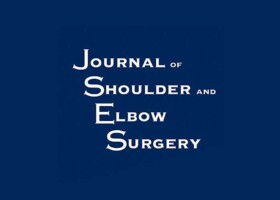
Authors:
Peter J. Millett, MD, MSca, Jean-Yves Schoenahl, MDa, Matthew J. Allen, VetMB, PhD, Tatiana Motta, DVM, MScb, Trevor R. Gaskill, MD
Abstract:
Glenohumeral osteoarthritis (GHOA) is characterized by pain, weakness, and cartilage degeneration. In some circumstances, a large inferior humeral osteophyte (goat's beard deformity) may develop, extending into the inferior glenohumeral joint capsule. Considering the intimate relationship of the axillary nerve to the inferior glenohumeral joint capsule, it is plausible that large humeral osteophytes may place the axillary nerve at risk for injury.
The axillary nerve provides motor innervation to the deltoid and teres minor muscles and is critical for normal shoulder function. It also carries sensory fibers from the lateral shoulder and innervates portions of the glenohumeral capsule. As exemplified by quadrilateral space syndrome, compression of the axillary neurovascular bundle can contribute to posterolateral shoulder pain and motor dysfunction. Many patients with GHOA also complain of lateral and posterior shoulder pain. Therefore, axillary nerve injury as a result of osteophytic spurring in patients with GHOA may manifest as posterior shoulder pain clinically or as fatty infiltration of distally innervated musculature on imaging modalities.
It is unclear, however, whether the neurovascular bundle is displaced as the inferior osteophyte grows or whether the osteophyte encroaches on the fixed neurovascular bundle to produce irritation. Therefore, the purpose of this study was to compare the proximity of the axillary neurovascular bundle to the inferior humerus in arthritic cohorts in the presence or absence of humeral osteophytes. Furthermore, teres minor fatty infiltration, serving as a surrogate marker of axillary nerve dysfunction, will be quantified. These factors will then be correlated with the presence and size of the inferior humeral osteophytes. Our hypothesis was that glenohumeral osteophytes are capable of encroaching on the axillary nerve and, if of sufficient magnitude, may result in axillary nerve dysfunction. This dysfunction will in turn be manifested as an increase in the degree of fatty infiltration within the teres minor muscle.
For the complete study: An association between the inferior humeral head osteophyte and teres minor fatty infiltration: evidence for axillary nerve entrapment in glenohumeral osteoarthritis
